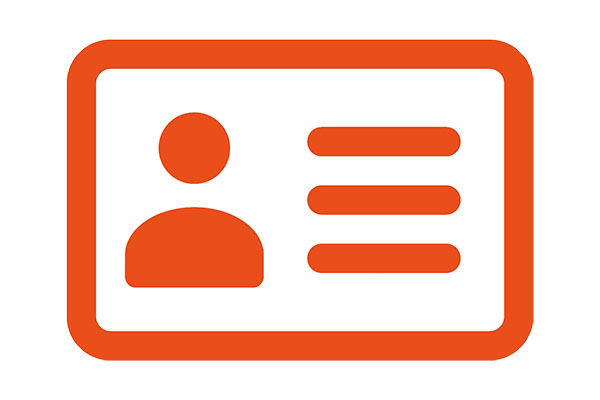1. Market abuse
Should firms have automatic surveillance monitoring systems?
The Market Abuse Regulation (MAR) becomes law on 3 July. MAR extends the range of instruments covered by the 2003 Market Abuse Directive to include financial instruments admitted to trading on multilateral trading facilities (MTFs) and organised trading facilities (OTFs), the price or value of which depends on or has an effect on the price or value of a financial instrument traded on a regulated market, MTF or OTF.
MAR’s market manipulation provisions extend any spot commodity contract having, likely to have, or intended to have an effect on the price or value of a financial instrument, or a spot commodity contract whose price or value depends on the relevant financial instrument.
MAR imposes obligations on persons arranging or executing transactions to establish effective processes to detect suspicious transactions and orders, and report them to a competent authority. This requirement was echoed by the Financial Conduct Authority (FCA) in its September 2015 Market Watch newsletter which covered the Commodities Trading Thematic Review, and in which the FCA expressed concern that many firms could not demonstrate that they had adequate monitoring and surveillance across the full range of market abuse risks.
The requirement to report attempted market abuse requires a firm to look at orders whether or not they have been executed, and so entities need to have in place a system which is capable of the analysis of every transaction and order. This will in most cases necessitate an automatic surveillance system. The European Securities and Markets Authority (ESMA) appears to recognise that automated surveillance may not be needed for all activities in all firms. If, for instance, certain orders are received by a front desk which is trained to detect suspicious activities, then it could be that these need not be surveyed automatically. An entity will be compliant with its obligations if the level of monitoring is effective and appropriate for the size and nature of the activity in question.
Comment. In deciding the level of surveillance, compliance officers would obviously like to see every order, every trade, and every cancelled order being subject to the same detailed and automatic examination. Their enthusiasm will be tempered by which of their activities can be picked up by the monitoring tool and the cost of picking up all activities. Firms will have orders and transactions in different buckets, and compliance will need to assess each bucket according to the number of transactions and orders, the type of financial instruments traded, the frequency, size and complexity of orders in each bucket. This assessment can lead to suitable surveillance for each bucket.

Suspicious transaction reporting
A suspicious transaction is one in which there are reasonable grounds to suspect it might constitute market abuse, such as insider dealing or market manipulation. Following MAR, suspicious orders and attempted behaviours must also be reported.
Regulators have the view that there is a general under-reporting of suspicious transactions across most asset classes, and the reasons for this could be wide-ranging. Firms may wish to avoid defensive reporting; it cannot be in anyone’s interest to submit a report on fragile evidence. The regulator has suggested that firms may set the bar too high and that a reasonable suspicion is enough, rather than looking for evidence amounting to proof. Of course, all regulators want to see a good number of Suspicious Transaction and Order Reports (STORs) from their own province and there may be disappointment at the lack thereof. A good flow of STORs means that firms have good surveillance systems and staff are well trained.
Comment. Lower STORs may suggest firms find it difficult to identify abuse, or perhaps in reality, market abuse is not as widespread as the authorities perceive?
Transaction reporting
The Transaction Monitoring Unit at the FCA is tasked with overseeing firms’ compliance with the transaction reporting rules in SUP 17.
The FCA has noted lately that transaction reporting by some firms is poor-quality, and common problems include late reporting (under European Market Infrastructure Regulation (EMIR), transaction reports are required on T+1), incorrect trade times, and incorrect trade codes. Compliance should look at its monitoring programmes to check the inclusion of transaction reporting tests. The revised Markets in Financial Instruments Directive (MiFID II) and the Markets in Financial Instruments Regulation (MiFIR) will bring in more complex reporting requirements, and there have been some hefty fines over the past year for transaction reporting failures.

2. Important changes in the London Metal Exchange rules
Enforcement processes
In January 2016 the London Metal Exchange (LME) informed member firms of a transitional period of three months starting from 1 February 2016, regarding enforcement action for certain rule breaches. That transitional period has now ended, bringing three business processing and reporting areas firmly onto the LME radar and subject to LME desk-based review.
Firms need to increase their vigilance on inputting trades into LMEsmart, the Exchange-controlled system for matching and registering trades. The LME has for several years named and shamed firms which late matched more than 12% of their telephone trades. In February they rolled that threshold out to Ring and Kerb trades, and also to Member-to-Member Basis trades.
Naming and shaming firms that fail to meet the 12% threshold is old hat and new penalties (ie, fines) have also been introduced. These are steep, so failures could prove costly. Late matching more than 12% of trades in any of the three categories could make the firm liable to a fine of £1,000 for the first offence, £2,000 for the second and £5,000 for each offence thereafter within a 24 month rolling period. Firms need to be careful, especially with Member-to-Member Basis trades. The LME has squeezed the definition of what constitutes such a trade, and consequently the number of these trades made by a member could be low. If a firm only makes 12 such trades in a month, then late match more than one of them and the threshold is breached.
Fines similar to those for late matching have now come into play for errors in trade reporting and errors in reporting option volatilities, plus a raft of other rule breaches.
Information on the LME’s new enforcement process follows their introduction of a revised Member Audit Programme (MAP).
Comment. The LME has in the past used a rolling full-scope member visit programme in order to ensure that members complied with the LME Rulebook. This is no longer practical, especially as the LME is working to attract members from outside of the EU and including South East Asia. It is therefore implementing a risk-based MAP which will involve desk-based reviews of key data and other reports. LME’s risk-based approach will identify which members will be subject to each review. Therefore members with higher activity or those conducting higher risk business will be subject to a greater number of reviews.

The impact of proposed accountability levels
The LME consulted with its members on the imposition of accountability levels for derivative contracts traded on the Exchange. The consultation closed on 8 April 2016 and the LME confirmed that it will introduce accountability levels with effect from 4 July 2016.
This regime is intended to provide more transparency for positions that exceed certain levels. Members will have an obligation to provide, when requested by the LME, additional information in respect of positions that exceed the accountability level. Although the LME will request the additional information from the member, due to the sensitivity of the information, members should encourage customers to provide the information directly to the Exchange. This will exonerate the member from taking any further steps.
The LME will monitor position limits at the customer level. However, unless the Exchange can be satisfied that the positions are independent it will also take into account: (i) positions of related group companies to ensure that a group of companies does not hold excessive positions; and (ii) positions of unconnected parties if the Market Surveillance department believes that there is a common purpose between such parties.
Currently the LME monitors all positions held on the Exchange on a daily basis, but the consultation is intended to make members responsible for reporting any positions that are in excess of the accountability levels.
Although this is widely seen as the first step in preparation of the position limit regime under MiFID II, this proposal could be interpreted as an attempt by the LME to protect its position as the world’s leading metal exchange. The LME argues that “the risks in the commodity markets are not comparable to those in other areas of the financial markets. If regulation is not tailored accordingly, it could risk irreparable damage to the wider industry, leading to a reduction in market participants, a trading shift to non-EU venues and reduced liquidity”.
Comment. The imposition of accountability levels could therefore be seen as the LME’s proposal of a compromise between regulating its own accountability levels and the pending EU’s position limit regime. Whether the LME will be able to convince EU legislators to make a special exemption from the position limit regime for its metal market is, however, yet to be seen. A further possible concern is putting an obligation on members to report customer position information to the Exchange; other exchanges make their own enquiries and discourage members from being involved. A member will only see the position held by their firm and there could be offsetting positions with other members. A customer may become very wary of different members contacting them and questioning them on apparently high positions when, on a net basis, there is in fact no position over the accountability level. Of course the Exchange will already know this fact since it can see the full customer position.

New market data usage licences
The LME adopted a new market data usage policy with effect from 4 April 2016. The policy covers both LME and London Bullion Market Association platinum and palladium (LBMA PGM) data. The policy has caused a furor in the metals industry, as it requires any entity that uses LME or LBMA data for valuations, pricing or as a reference price in transactions to obtain a ‘usage licence’.
Data users can either obtain a ‘standard’ licence (covering the entity itself and up to five affiliates) or a ‘premium’ licence (covering the entity itself and an unlimited number of affiliates) in relation to each type of data. In respect of LME data, the LME has waived the licence fee for the year 2016 for category 1–5 LME members and their clients who hold LME client contracts. The waiver for the latter group can be interpreted as an attempt to discourage market participants from moving their metals hedging business to the over-the-counter market as a result of the new policy. Waivers in respect of the LBMA PGM data are limited to member participants that take part in the price discovery process and their affiliates.
As long as an entity uses the data for these purposes, it needs to obtain a usage licence through the LME’s newly established online portal – this is regardless of whether or not the entity already subscribes to LME or LBMA PGM data (eg, through a data vendor) and the delay class of such data.
Comment: Considering that the prices discovered on the LME’s platforms are used as the global reference price and the basis for physical trading, as well as in the valuation of trading portfolios and commodity indices, this new policy by the LME is likely to be of concern to a large part of the global metals industry. The policy is another step in the process of ‘commercialisation’ of the LME, which has been the dominant theme since the acquisition of the LME by Hong Kong Exchanges and Clearing in 2012. It follows LME initiatives such as launching its own clearing house, and significant increases to its traditionally low trading fees.

3. Important clearing equivalence rules for EU and US central counterparties
In the wake of the global financial crisis, there was international agreement that action was required to bring transparency to the murky world of derivatives, and central clearing of certain interest rate and credit default swaps was seen as part of the solution.
Most derivatives are traded in New York and London, but for several years the regulators on either side of the Atlantic were unable to accept the other’s rules for central counterparties (CCPs). The European and US Commodity Futures Trading Commission (CFTC) swap clearing requirements are both based on G20 principles, and are therefore similar in many respects. However there were some differences with implementing rules. One sticking point was on initial margin requirements, and a critical difference between the US and EU derivatives clearing regimes related to the margin period of risk (MPOR) for cleared financial instruments that are executed on an exchange. For US CCPs, the MPOR for these instruments is one day, applied for client accounts on a gross basis. Under the EU regime, the MPOR is two days, but margin may be provided on a net basis.
The CFTC and the European Commission have finally reached agreement on CCP equivalence and will now recognise each other's clearing houses and regulatory regimes. EU equivalence must be sought by individual US CCPs seeking EU recognition, confirming that their internal rules and procedures ensure:
- collection of initial margin sufficient to take into account a two-day liquidation period for clearing members' proprietary positions in exchange-traded derivatives
- that initial margin models include measures to mitigate the risk of pro-cyclicality
- the maintenance of ‘cover 2’ default resources. Cover 2 default resources, under EMIR, are sufficient to cover defaults by the CCP's two largest clearing members.
These conditions will not apply to US agricultural commodity derivatives traded and cleared domestically within the US.
The agreement will allow market participants to use each others' CCPs to satisfy derivatives clearing requirements. This is very important and timely because 21 June is the date when the EMIR clearing obligation is set to begin for credit default swaps. The Commission’s equivalence determination will enable EU market participants to continue to satisfy derivatives clearing requirements by clearing swaps that must be cleared under EMIR with a CFTC-registered CCP. CFTC is set to propose a similar determination of comparability for EU CCP rules, which will allow EU-registered CCPs to provide clearing services to US market participants in satisfaction of CFTC rules requiring clearing of certain swaps. A US CCP may serve EU markets and will become a qualifying CCP for purposes of the EU Capital Requirements Regulation. EU banks that use these CCPs will now be able to avoid excess regulatory capital charges for holding positions under derivatives contracts with non-equivalent CCPs.
Comment. The accord is a big step towards global regulatory convergence. It will also influence third countries which would otherwise have developed their own standards. It is a helpful precedent for equivalence negotiations under MiFID II, which are complex.

4. Oil traders concerned by new derivative rules
New rules moving though the EU could have profound consequences for the UK energy markets. Oil traders could be limited in the number of futures contracts they can hold, unless they can prove the majority of their trading is not speculative.
MiFID II brings more firms into regulation, and energy traders will need to pass some tests or find themselves being regulated and having to hold as much capital as banks.
Comment. Some consider that these changes could damage the City’s position as the leading global centre for commodity derivative trading and restrict hedging on EU market trading venues by the physical commodity traders. This may push business away from London to Singapore and New York and provide some ammunition to the vote leave campaign.
Opinions expressed in this article are personal to the writer so should not be interpreted as being those of the CISI or anyone else.
For more information on our Derivatives offerings, have a look at our Capital Markets Programme. Also take a look at the Derivatives and Market Abuse Professional Refresher modules. Professional Refresher is a training solution to help you remain up to date with industry developments, maintain regulatory compliance and demonstrate continuing learning. There are currently over 70 modules on a range of hot topics in the financial services industry – all are free to CISI members and can be accessed via MyCISI on the CISI website.